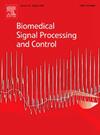基于深度学习的骨髓细胞学分类:一类不平衡的解决方案
IF 4.9
2区 医学
Q1 ENGINEERING, BIOMEDICAL
引用次数: 0
摘要
骨髓细胞的分类对白血病、淋巴瘤等造血疾病的诊断具有重要意义。传统的方法,如全血细胞计数和外周涂片分析,主要关注成熟血细胞。然而,骨髓分析对于了解血细胞发育的各个阶段至关重要。手工骨髓分析耗时,容易出错,并且需要专业知识。此外,骨髓细胞的分类由于细胞系的变化和形态的变化而变得复杂,导致数据的不平衡。本研究引入一种新的嵌入空间重采样技术(ESRT)与特征提取器模型相结合,以解决数据不平衡问题,提高分类效率。该算法不依赖图像数据像素空间,而是在嵌入空间中生成少数类的合成样本。ESRT方法通过关注具有挑战性的样本来对决策边界附近进行分类并提取关键嵌入,从而提高了计算效率并扩展了决策边界。这种方法通过突出显示对立类别中的对抗性示例来增强模型区分类别的能力。使用21类大型骨髓细胞学数据集,所提出的框架实现了令人印象印象的分类精度和马修斯相关系数(MCC)分别为89.90%和73.19%,超过了现有方法。在未见过的测试数据集上,推理的准确率和f1得分分别为75.58%和76.11%。该框架提供了一个解决数据不平衡的方案,在不需要大量预处理的情况下,显著提高了模型和分类性能。本文章由计算机程序翻译,如有差异,请以英文原文为准。

Deep learning-based bone marrow cytology classification: A solution to class imbalance
Classification of bone marrow cells is important for diagnosing hematopoietic diseases such as leukemia and lymphoma. Traditional methods, such as complete blood count and peripheral smear analysis, focus mainly on mature blood cells. However, bone marrow analysis is critical to understanding all stages of blood cell development. Manual bone marrow analysis is time-consuming, error-prone and requires expertise. In addition, the classification of bone marrow cells is complicated due to changing cell lineages and morphological variation, leading to data imbalance. This study introduces a new Embedding-Space Re-sampling Technique (ESRT) integrated into a feature extractor model to address data imbalance and improve classification. This algorithm generates synthetic samples for minority classes in the embedding space instead of relying on image data pixel space. The ESRT approach improves computational efficiency and expands decision boundaries by focusing on challenging samples to classify near decision boundaries and extract key embeddings. This method enhances the model’s ability to distinguish between classes by highlighting adversarial examples from opposing classes. Using a large 21-class bone marrow cytology dataset, the proposed framework achieved an impressive classification accuracy and Matthews Correlation Coefficient (MCC) of 89.90% and 73.19%, respectively, surpassing existing methods. Also, the accuracy and F1-score of the inference on the unseen test dataset are 75.58% and 76.11%, respectively. This framework provides a solution to data imbalance with significant efficiency, increasing model and classification performance without the need for extensive preprocessing.
求助全文
通过发布文献求助,成功后即可免费获取论文全文。
去求助
来源期刊

Biomedical Signal Processing and Control
工程技术-工程:生物医学
CiteScore
9.80
自引率
13.70%
发文量
822
审稿时长
4 months
期刊介绍:
Biomedical Signal Processing and Control aims to provide a cross-disciplinary international forum for the interchange of information on research in the measurement and analysis of signals and images in clinical medicine and the biological sciences. Emphasis is placed on contributions dealing with the practical, applications-led research on the use of methods and devices in clinical diagnosis, patient monitoring and management.
Biomedical Signal Processing and Control reflects the main areas in which these methods are being used and developed at the interface of both engineering and clinical science. The scope of the journal is defined to include relevant review papers, technical notes, short communications and letters. Tutorial papers and special issues will also be published.
 求助内容:
求助内容: 应助结果提醒方式:
应助结果提醒方式:


